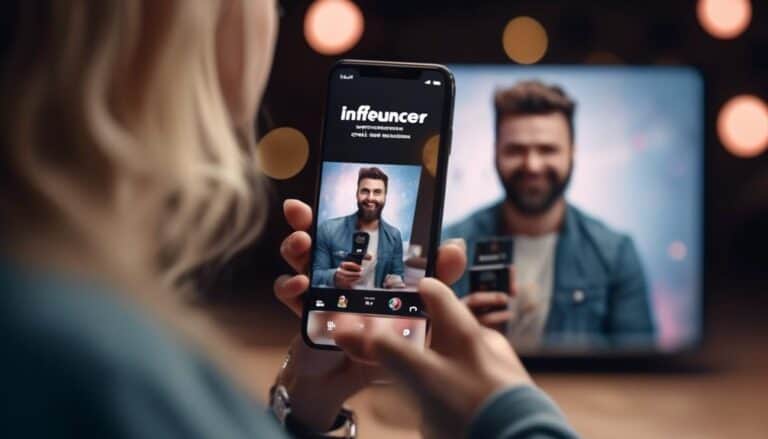Maximizing ROI: Strategies for Cost-Effective Paid Social Campaigns
Ever wondered how you could spend more money to make less profit? Probably not.
When it comes to paid social campaigns, the goal is to maximize your Return on Investment (ROI) by implementing strategies that ensure cost-effectiveness and tangible results.
As you navigate the ever-evolving landscape of social media advertising, it's essential to grasp the nuances of crafting campaigns that not only capture attention but also convert effectively.
Through a series of calculated steps, you can unlock the potential for your campaigns to drive meaningful outcomes while keeping a close eye on the bottom line.
Key Takeaways
- Define measurable campaign goals aligned with business objectives
- Utilize demographic targeting and audience segmentation for tailored ad content
- Conduct A/B testing to optimize ad creatives and engagement techniques
- Allocate budget based on data-driven decisions and continuously monitor performance metrics
Setting Clear Campaign Goals

To run cost-effective paid social campaigns successfully, you must set clear and measurable campaign goals from the outset. Goal measurement is crucial for determining the effectiveness of your strategies and ensuring that your efforts align with your overall business objectives. By defining specific metrics such as click-through rates, conversion rates, or engagement levels, you can track progress and make data-driven decisions to optimize performance.
Once you have established your goals, the next step is strategy refinement. This involves continuously monitoring key performance indicators and adjusting your tactics based on real-time data insights. By analyzing campaign results, you can identify what's working well and what needs improvement, allowing you to adapt your approach for maximum impact.
Setting clear campaign goals and consistently measuring your progress is essential for driving innovation and achieving success in the competitive landscape of paid social advertising. Embrace the power of data-driven decision-making to refine your strategies and unlock new opportunities for growth.
Audience Segmentation Strategies
Effective audience segmentation is a key driver of targeted marketing campaigns. By employing advanced strategies, you can optimize your paid social campaigns for maximum impact and return on investment. Here are four essential audience segmentation tactics to elevate your marketing efforts:
- Demographic Targeting: Utilize demographic data such as age, gender, income, and location to tailor your ad content to specific audience segments. This targeted approach ensures that your message resonates with the right people at the right time.
- Behavioral Segmentation: Analyze user behavior, such as online interactions, purchase history, and engagement patterns, to categorize audiences based on their actions. This data-driven approach allows you to deliver personalized content that aligns with consumer preferences and interests.
- Interest-Based Targeting: Leverage insights on audience interests, hobbies, and preferences to create customized content that captures their attention. By aligning your messaging with what your audience cares about, you can foster deeper connections and drive engagement.
- Lookalike Audiences: Identify high-value customers or leads and create lookalike audiences based on their characteristics. This strategy helps you expand your reach to new prospects who share similarities with your existing loyal customers, increasing the likelihood of conversion.
Ad Creative Optimization Techniques

Utilizing data-driven insights and strategic analysis, optimizing ad creative is essential for maximizing the impact and effectiveness of your paid social campaigns. A key technique to enhance ad creative performance is through A/B testing. By systematically comparing different versions of your ads, you can identify which elements resonate best with your audience and drive higher engagement rates. This empirical approach allows you to refine your creatives based on real-time data, ensuring that your messaging is tailored to meet the specific preferences of your target audience.
In addition to A/B testing, incorporating visual storytelling into your ad creatives can significantly boost engagement and conversion rates. Visuals have the power to capture attention, evoke emotions, and convey complex ideas quickly and effectively. By weaving a compelling narrative through imagery and graphics, you can create a more immersive and memorable experience for your audience, ultimately driving stronger results for your paid social campaigns. Embrace these optimization techniques to elevate the impact of your ad creatives and unlock the full potential of your paid social efforts.
Budget Allocation Best Practices
For optimal performance in your paid social campaigns, strategic allocation of your budget is paramount. To ensure cost efficiency and maximize return on investment, consider the following best practices:
- Data-Driven Decisions: Utilize analytics tools to identify high-performing ad sets and allocate more budget towards them. By focusing on what works based on data, you can optimize your spending for better results.
- A/B Testing Allocation: Allocate a portion of your budget to A/B testing different ad creatives, audiences, or placements. This approach allows you to refine your strategy based on real-time performance data, ultimately improving ROI.
- Dynamic Budget Adjustments: Monitor campaign performance closely and be ready to shift budget allocations based on real-time insights. By adapting quickly to changing trends or audience behavior, you can ensure your budget is being used effectively.
- Long-Term Planning: Develop a comprehensive budget allocation strategy that considers both short-term goals and long-term objectives. By aligning your budget with your overall marketing strategy, you can achieve sustainable ROI and cost-efficiency in your paid social campaigns.
Monitoring and Analyzing Performance Metrics

To ensure a successful cost-effective paid social campaign, the next crucial step is to closely monitor and analyze performance metrics for actionable insights and optimization opportunities. Performance tracking is essential for evaluating the effectiveness of your campaigns. By closely monitoring key metrics such as click-through rates, conversion rates, cost per acquisition, and return on ad spend, you can gain valuable insights into what's working well and what areas may require adjustment.
Data analysis plays a pivotal role in uncovering patterns and trends within your campaign performance. Utilizing advanced analytics tools can help you identify correlations between different variables and understand the impact of your campaign activities on overall outcomes. By leveraging data-driven insights, you can make informed decisions to optimize your targeting, messaging, and budget allocation for maximum ROI.
Regularly reviewing performance metrics and conducting in-depth data analysis allows you to iterate and refine your paid social campaigns continuously. This iterative approach enables you to adapt to changing market conditions, consumer preferences, and competitive landscapes, ensuring that your campaigns remain cost-effective and drive meaningful results.
Frequently Asked Questions
How Can a Company Leverage User-Generated Content in Their Paid Social Campaigns to Increase Engagement and Roi?
To boost engagement and ROI, leverage user-generated content like testimonials in your paid social campaigns. Incorporate UGC strategically to foster brand loyalty. Analyze data to identify top-performing UGC and optimize campaigns for maximum impact.
Are There Any Specific Tools or Software Recommended for Tracking and Analyzing Social Media Campaign Performance Metrics?
To track and analyze social media campaign performance metrics, utilize social listening tools and analytics platforms. These tools offer insights into campaign optimization and ad performance, enabling you to make data-driven decisions for maximizing ROI.
What Are Some Common Pitfalls to Avoid When Setting Campaign Goals to Ensure Optimal Roi?
When setting campaign goals for optimal ROI, avoid unrealistic targets. Focus on your targeted audience to drive results. By aligning objectives with audience needs, you can ensure a cost-effective and successful paid social campaign.
How Can Businesses Effectively Measure the Impact of Influencer Partnerships in Their Paid Social Campaigns?
To measure influencer impact in your paid social campaigns effectively, track engagement metrics, conversions, and brand sentiment before and after the partnership. Utilize unique tracking links, promo codes, and surveys for detailed insights.
Are There Any Emerging Trends or Technologies in the Paid Social Advertising Space That Can Help Optimize ROI Further?
To optimize ROI in paid social campaigns, explore emerging trends like artificial intelligence for advanced targeting strategies. Utilize engaging video content and compelling storytelling techniques to captivate audiences. These innovations can boost your campaign performance significantly.
Conclusion
By implementing the strategies outlined in this article, you can maximize ROI and ensure cost-effective paid social campaigns.
Setting clear campaign goals, utilizing audience segmentation, optimizing ad creative, allocating budget wisely, and monitoring performance metrics are key steps to achieving success.
Remember, data-driven decisions and continuous analysis are essential for optimizing campaign performance and driving results.
Stay focused, strategic, and always keep an eye on the metrics to ensure your paid social campaigns are delivering the best possible return on investment.








